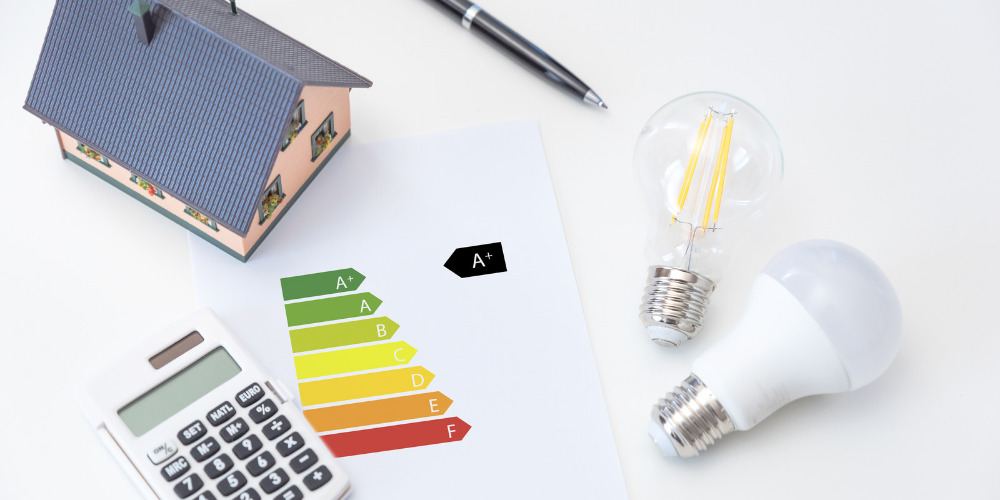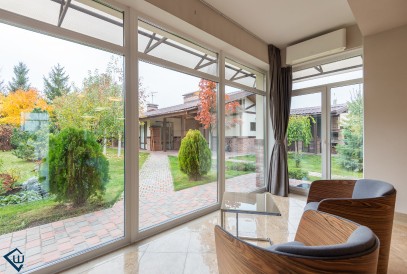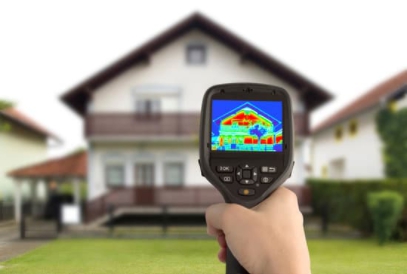Energy class of a property: what is it, how is it calculated and who establishes it?
An
energy class tells us how much a property consumes.
Understanding how the energy class of a building is calculated is essential for determining the value of a structure (especially when you want to sell or rent it).
Several questions revolve around the
calculation of the energy classification that I will try to give a clear answer in this guide.
Do you want to improve your home's energy efficiency? A simple yet effective solution is
insulating the roller shutter boxes, which reduces heat loss and helps achieve a better energy rating.
I'm
Elia Caneppele, in life I deal with explaining online products and topics on construction. I am particularly interested in the world of windows.
I suggest you also read this other article of mine on
how much it costs to renovate the house, where I go to evaluate the prices of the different factors that influence the repair.
I begin the guide on
the energy scale by clarifying the meaning and purpose of the
energy certification of houses and apartments, and then see the main energy classes and what requirements must be met for the assignment.

What does Energy Class mean?
The energy classes highlight the energy performance of the houses. They do this on the basis of functional and structural parameters that determine the use of electricity.
The division into classes is done with the letters of the alphabet, in addition to numbers, on an energy scale that classifies consumption in ascending order. The first is class A4, passing through energy class E up to G.
An energy class is calculated based on the building's global non-renewable
energy performance index (which we will later call EP). If the letter is low, the energy consumption of the building is higher.
What is the energy class for?
The energy classification indicates how much a building consumes . It is useful for evaluating how much a property consumes according to its structural characteristics.
The goal of the Italian legislator is to
reduce energy waste and therefore the environmental impact.
Energy certification is imposed on:
- lease agreements;
- deeds;
- real estate advertisements;
- deductions such as bonuses and rebates.
What is the best energy class?
The energy classes are ten in all. They have a
score ranging from 1 to 10 (for the most efficient) depending on the consumption range.
In this table you will find the minimum and maximum values and the score.
The
abbreviation EP indicates the energy performance index.
| Energy rating |
Minimum consumption |
Maximum consumption |
Score awarded |
| Class A4 |
- |
0.40 EP or less |
10 |
| Class A3 |
more than 0.40 EP |
0.6 EP or less |
9 |
| Class A2 |
more than 0.60 EP |
0.8 EP or less |
8 |
| Class A1 |
more than 0.80 EP |
1 EP or less |
7 |
| Class B |
more than 1.00 EP |
1.2 EP or less |
6 |
| Class C |
more than 1.20 EP |
1.5 EP or less |
5 |
| Class D |
more than 1.50 EP |
2 EP or less |
4 |
| Class E |
more than 2 EPs |
2.6 EP or less |
3 |
| Class F |
more than 2.6 EP |
3.5 EP or less |
2 |
| Class G |
more than 3.5 EP |
- |
1 |
The characteristics of the energy classes
Lowering energy losses has the purpose of reducing consumption and helping the environment. Furthermore, the house is worth more because it improves the energy class assigned, an indicator that helps to raise its price on the market.
For this reason, if you have to buy or sell a house, it is very important to know what is the energy class that has been assigned to it, which you find indicated in the APE, the Energy Performance Certificate, which we will discuss later.
Let's see in detail the characteristics of each energy class.
Energy class G
- Score: 1;
- Max consumption: not specified;
- Min consumption: less than or equal to 3.50 EP.
Energy efficiency class G is the lowest. It presents issues similar to energy class F. It usually includes buildings built more than 40 years ago.
A house with energy category G involves higher costs and very high bills for heating and appliances.
Energy class F
- Score: 2;
- Max consumption: less than or equal to 3.50 EP;
- Min consumption: less than or equal to 2.60 EP.
A house with energy category F has obsolete systems and does not use renewable sources. The windows disperse heat and have
drafts.
Energy class E
- Score: 3;
- Max consumption: less than or equal to 2.60 EP;
- Min consumption: less than or equal to 2.00 EP.
Energy class E is the most widespread. They are usually buildings built in the 70s, 80s and 90s. The energy expenditure is better than buildings in energy categories F and G, but not enough to consider the building really efficient.
Energy class D
- Score: 4;
- Max consumption: less than or equal to 2.00 EP;
- Min consumption: less than or equal to 1.50 EP.
Compared to the energy class E it has more thermal resistance because normally the external walls have an increase in thickness and the insulation of the roof has been improved.
Energy class C
- Score: 5;
- Max consumption: less than or equal to 1.50 EP;
- Min consumption: less than or equal to 1.20 EP.
Energy class B
- Score: 6.
- Max consumption: less than or equal to 1.20 EP;
- Min consumption: less than or equal to 1.00 EP.
Energy class A
It is a building with almost zero energy impact.
Energy class A is divided into A4, A3, A2, A1:
- energy class A4: score 10. Max consumption: less than or equal to 0.40 Ep. Min consumption: not specified;
- energy class A3: score 9. Max consumption: less than or equal to 0.60 Ep. Min consumption: less than or equal to 0.40 EP;
- energy class A2: score 8. Max consumption: less than or equal to 0.80 Ep. Min consumption: less than or equal to 0.60 EP;
- energy class A1: score: 7. Max consumption: less than or equal to 1.00 Ep. Min consumption: less than or equal to 0.80 EP.

How to calculate the energy class?
As you have seen, the calculation of the energy class is based on the assignment of the EP energy performance index.
The EP value is given according to the certifications and structural characteristics of the building being evaluated, including:
- Space size;
- Quality of materials;
- Quality of the fixtures, for example if they are energy-saving windows ;
- Climatic conditions and heat loss;
- Use of renewable energy plants and sources;
- Building renovation and improvements.
APE - Energy Performance Certificate
The
energy performance certificate (APE) is the document that reports the energy class of a building and defines its energy performance. It replaces what was previously the Energy Certification Certificate or ACE.
Basically, the APE contains the energy characteristics of a house or apartment. But by whom is it released? Read on to learn more.
Energy class apartments and houses: the figure of the energy certifier
The APE is issued exclusively by a qualified technician: the
energy certifier . Qualified persons are registered in the register of persons authorized to issue energy certifications.
The energy certifier is a professional who carries out the
energy audit of a building to quantify the energy consumption of the building. In doing so, it usually takes into account the standard conditions of use and climatic conditions depending on the climatic zone.
When is there an obligation to certify the energy performance?
The energy performance certificate is mandatory in several events:
- When buying a real estate unit;
- Rental of an entire property (to be attached to the contract) or of individual units (to be drawn up and not necessarily attached);
- When you donate a property;
- In the case of new buildings;
- Restructuring interventions of more than 25% of the surface;
- Demolition and reconstruction;
- Public administration buildings open to the public and with an area of more than 250 square meters;
- Stipulation of a contract for heating or air conditioning systems of a public facility.
How much does the energy performance certificate (APE) cost?
The cost of the APE can vary
between 150 and 300 euros depending on the city and the characteristics of the building. In fact, different prices have been reported between the Regions, even if the modality is always the same.
I hope this guide was useful to you.





